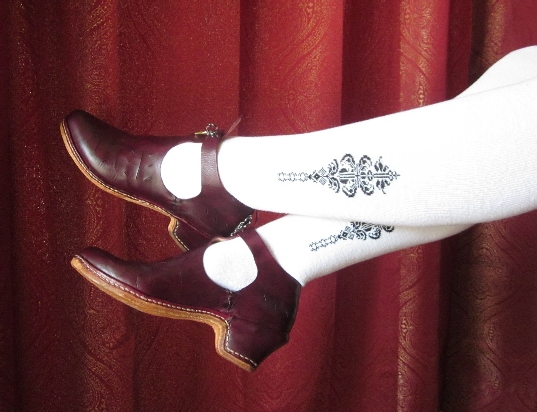 |
I just posted a new Lesson on Late 16th / Early 17th C. Heels (Timber). This lesson is based upon the 1600s whitawed heels in the Ashmolean museum in Oxford. Although the extant heels were the inspiration for this piece, there were a couple of departures that I took. I look forward to your comments, and hope that you enjoy! |
|
Tag Archives: 16th C
Sitting Pretty in the 16th C.
A pair of shoes for Edmund, very similar to Lesson 7: Mid 16th C. Shoes (Stacked Leather). I also pegged these shoes, although upon further reading, I do believe that rectangular pegs only started coming around in the late 17th. Perhaps the next time, I’ll experiment with a different type of peg. From what I have read on the Crispin Colloquy, they were typically oblong or oval shaped, probably from whittling away thin strips of wood.
Also note that in these shoes, I’ve made the lining much fuller so it can be partially pulled through the slits in the upper. I’ll be curious to know how well it stays!
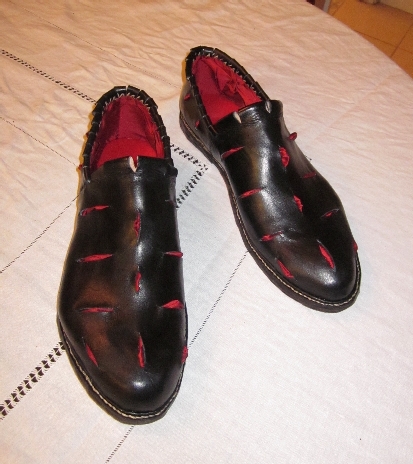 |
 |
|
More Shoes and Williamsburg Murmurings
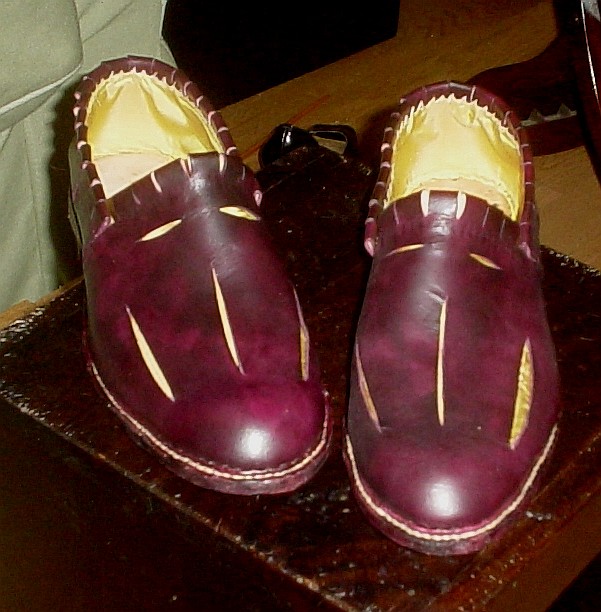 |
A pair of shoes for Bess, again, very similar to Lesson 7: Mid 16th C. Shoes (Stacked Leather). These have pickadils all the way around instead of just on the vamp, and I tried a new technique where I didn’t leave any space between them. I really like the way they look, and will be doing all of my pickadils like this in the future. | |
In other news, and I apologize for being so quiet on the topic, I returned from Williamsburg about a month ago after attending a symposium on Costume accessories. It was a wonderful experience, and I was even able to get some time to pick some of the minds of the very talented cordwainers at Williamsburg. A few of the highlights that I came away with (so as not to give away all of the secrets!), and I will be adding more as I go through my notes:
16th C. Shoes with a Stacked Heel
Take a look at the shoes just recently finished for Laina – they’re very similar to the shoes from Lesson 7: Mid 16th C. Shoes (Stacked Leather), but in this case, I added a bit of leather edging around the quarters and vamp. I also decided to dye the welt and the sole black to contrast with the red shoe. I can’t actually document that, but they definitely look spiff.
Note that these shoes are lined with black silk taffeta. I’m still struggling with documenting a shoe that is lined as such. Most of the paintings and portraits that we have show the wearer’s hose showing through the slashes, but in many cases, there is some kind of binding or stitching on the outside of the slashes. In some cases, it even looks like whip stitching. There is also evidence for fabric covered shoes, but, especially with white fabric, I suspect that these could get dirty rather easily. Leather, on the other hand, only gets better looking as it wears provided it is kept in good shape. It can always take a cleaning with some light soap and a nice buff will make it look shiny, both figuratively and literally!
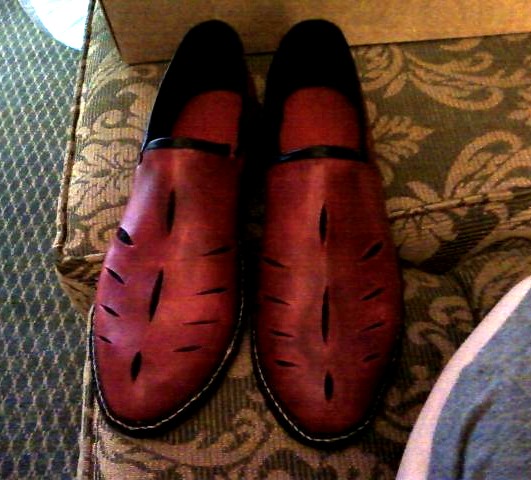 |
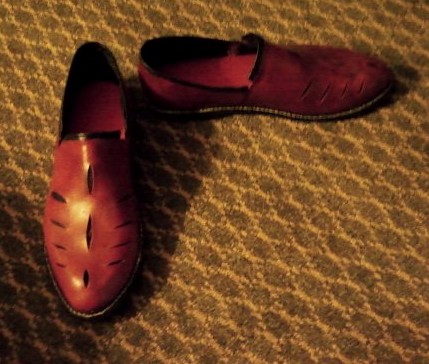 |
|